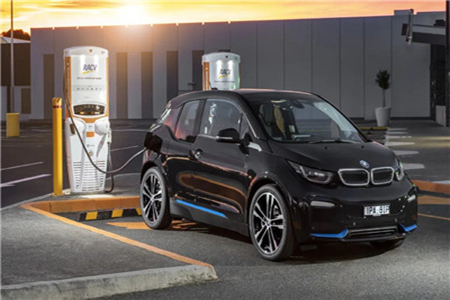Online shopping in India has seen exponential growth in recent years, thanks to the country’s size, adverse logistics conditions, and a surge of e-commerce companies. Reports suggest online shopping is expected to touch USD 425 million by 2027 from 185 million in 2021.
EV cargo carriers are vital in making this possible, offering e-commerce companies a cost-efficient and carbon-efficient method. Speaking to Digitimes Asia recently, Rohit Gattani, VP of growth & vehicle financing at Euler Motors, explained that this is more prominent during the festival seasons when e-commerce companies like Amazon and Flipkart witness a surge in sales.
“E-commerce, obviously, has a significant chunk of their volumes during the BBT festive season sales, which starts one and a half months before Diwali and continues until most of their sales occur,” Gattani said. “EV comes into play as well. It’s a boon for the overall commercial segment. Still, in the recent push, two factors drive EV adoption: one internally (related to cost) and the other, moving towards a pollution-free festival and operations.”
Meeting pollution mandates and reducing cost concerns
Major e-commerce companies have ESG mandates to move towards greener sources, and EVs are a green source. They also have mandates to be cost-efficient, as operating costs are much lower than diesel, petrol, or CNG. Operating costs would be somewhere between 10 to 20 percent, depending on petrol, diesel, or CNG. During the festive season, making multiple trips increases operating costs. So, these are the two factors driving EV adoption.
“There’s also a broader trend. Earlier, e-commerce sales were mostly towards fashion and mobile, but now there’s a push towards larger appliances and the grocery sector,” Gattani pointed out. “Two-wheelers play an important role in small volume deliveries such as mobile phones and fashion. Three-wheelers are important in appliances, larger deliveries, and groceries, as each shipment could be around two to 10 kgs. That’s where our vehicle plays an important role. When we compare our vehicle to a similar category, the performance is way better regarding torque and operating costs.”
The operating cost per kilometer for an Euler vehicle is approximately 70 paise (approximately 0.009 USD). In contrast, the cost for a Compressed Natural Gas (CNG) vehicle ranges from three and a half to four rupees (approximately 0.046 to 0.053 USD), depending on the state or city. In comparison, petrol or diesel vehicles have a higher operating cost of six to seven rupees per kilometer (approximately 0.079 to 0.092 USD).
There is also the fact that drivers will experience enhanced comfort when operating an EV vehicle for extended periods, ranging from 12 to 16 hours per day, due to the additional features that have been incorporated to facilitate ease of use. Delivery partners play a pivotal role in the ecosystem, serving as the crucial link between companies and customers, ensuring the timely receipt of orders and salaries.
“Their significance is further amplified by their preference for driving EV vehicles, particularly Euler, which offers superior decision-making capabilities, multiple trip options, and a substantial load capacity of up to 700 kilograms,” Gattani added. “The efficiency of these vehicles is evident in their ability to cover a distance of 120 kilometers on a single charge, with the option to extend this range by an additional 50 to 60 kilometers following a brief charging period of 20 to 25 minutes. This feature proves particularly beneficial during the festive season, facilitating seamless operations and underscoring the value proposition of Euler in contributing to the optimization of the entire ecosystem.”
Lower maintenance
In a significant development for the electric vehicle (EV) industry, maintenance costs have been substantially reduced by approximately 30 to 50%, attributed to the fewer mechanical parts in EVs, resulting in less wear and tear. From an oil industry perspective, proactive measures are being taken to implement preventive maintenance protocols.
“Our EV infrastructure and platform are equipped with data capturing capabilities, currently collecting around 150 data points every minute at multiple frequencies to monitor the vehicle’s health,” Gattani added. “This, combined with GPS tracking, provides valuable insights into the system, allowing us to perform preventive maintenance and over-the-air (OTA) updates to address any issues. This approach enhances the vehicle’s performance and reduces downtime, typically higher in internal combustion engine vehicles.”
The integration of software and data capturing capabilities, akin to modern smartphones, empowers the industry to deliver superior performance in maintaining vehicle health and ensuring battery longevity. This development marks a pivotal step forward in the evolution of the electric vehicle industry, setting a new standard for vehicle maintenance and performance optimization.
Post time: Oct-25-2023

 Portable EV Charger
Portable EV Charger Home EV Wallbox
Home EV Wallbox DC Charger Station
DC Charger Station EV Charging Module
EV Charging Module NACS&CCS1&CCS2
NACS&CCS1&CCS2 EV Accessories
EV Accessories

